Follow in the footsteps of colonial conquest and collective cultures to truly appreciate the fascination of northeast India.
Like it or not and as controversial as it may be now, the British left their mark wherever they stepped whilst ruling over one third of the earth’s surface during the days of Empire.
This is no greater in evidence than in the rail networks, legal and parliamentary systems, hill stations and tea plantations of India.
As well as an eye for trade and profit, you really can’t fault the Raj for its unerring ability to pick the most beautiful locations in which to base themselves and if you simply follow the thread of British presence you’ll see some of the most breath-taking sights in India.

The Lesser Himalayas offer no less a spectacle throughout the foothills of West Bengal
This principle especially applies in West Bengal, where you’ll inevitably route through Calcutta (now Kolkata), once the seat of British power in India; still sporting its grandiose architecture as a forget-me-not of colonial reign. From here if you head for the hills by flying to Bagdogra, you might then pass through Gorumara National Park – not one of the most fauna rich parks in India but beautiful in its pastoral mix of farming and wildlife.
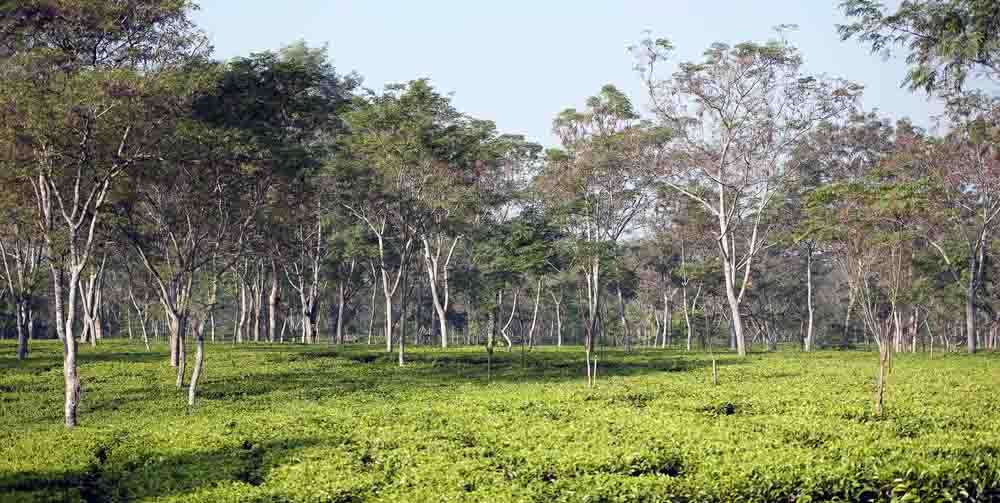
Lowland tea gardens share Reserve Forest with the indigenous wildlife of Gorumara National Park
Located in the Dooars Terai region of the Himalayan foothills, it’s of medium-size with grasslands and forests primarily home to a population of Indian rhinoceros. Back in 2009 it was declared the best of Indian protected areas by the Ministry of Environment and Forests.
To our mind, it serves best as a stopover before heading into the mountains – although we did see Elephant, Crested Serpent Eagle and Malabar Pied Hornbills on an otherwise uneventful foray into the jungles.
We’re heading for Darjeeling. The development of the town in the Lesser Himalaya region dates back to the mid-19th century, when the British initially set up a sanatorium and military outpost followed by extensive tea plantations. Tea growers subsequently developed hybrids of black tea with new fermentation techniques, resulting in the now internationally recognised ‘Darjeeling black tea.’ First, however we’re travelling via Kalimpong.
Kalimpong
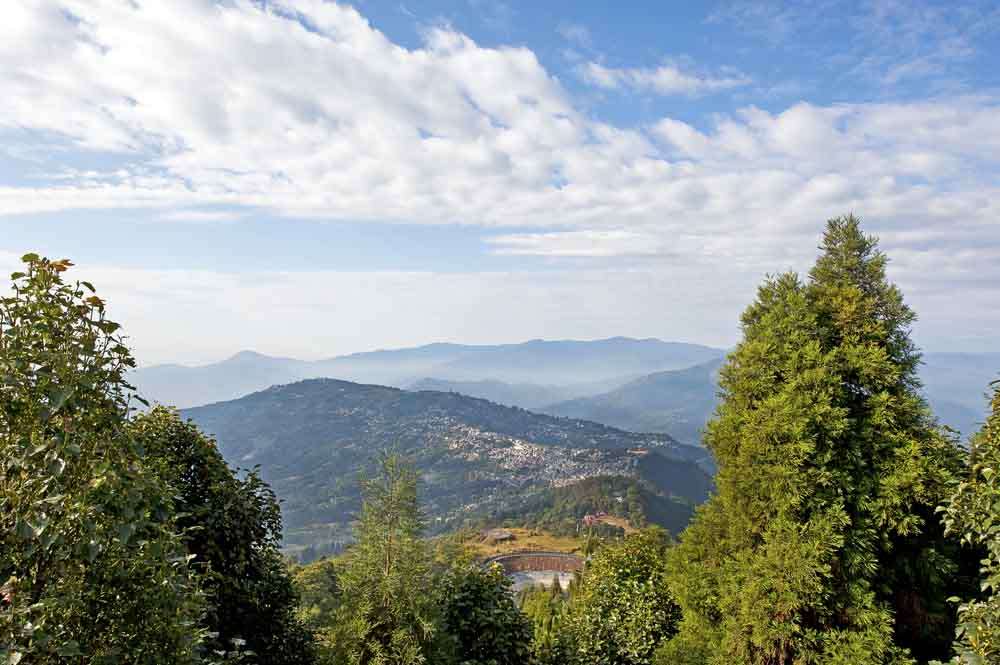
We think the best way to view Kalimpong town itself
En route, however, we stop off at a couple of locations near Kalimpong. Sitting on a ridge overlooking the Teesta River, Kalimpong is a tourist destination primarily due to its temperate climate, fantastic Himalayan views and convenience for popular tourist locations.
We stop briefly at the Kagyu Thekchen Ling Monastery and enjoy a conversation with one of the principal Buddhist teachers who describes the passage of novices through their life towards acceptance as monks; whilst we stand in front of the ornately decorated monastery with a beautiful backdrop of rolling hills.
Whereas we think Kalimpong town is best viewed from one of the neighbouring hills, it nevertheless boasts a flower market and many nurseries notable for their wide array of orchids and cactus; a famous international ‘colonial’ school, Dr. Graham’s, which continues its benevolent work today and one of the best viewpoints at Deolo with 360 degree views over the Himalayan foothills – oh – and a couple of quality hotels that will immunise you from the clamour of the town.
Darjeeling
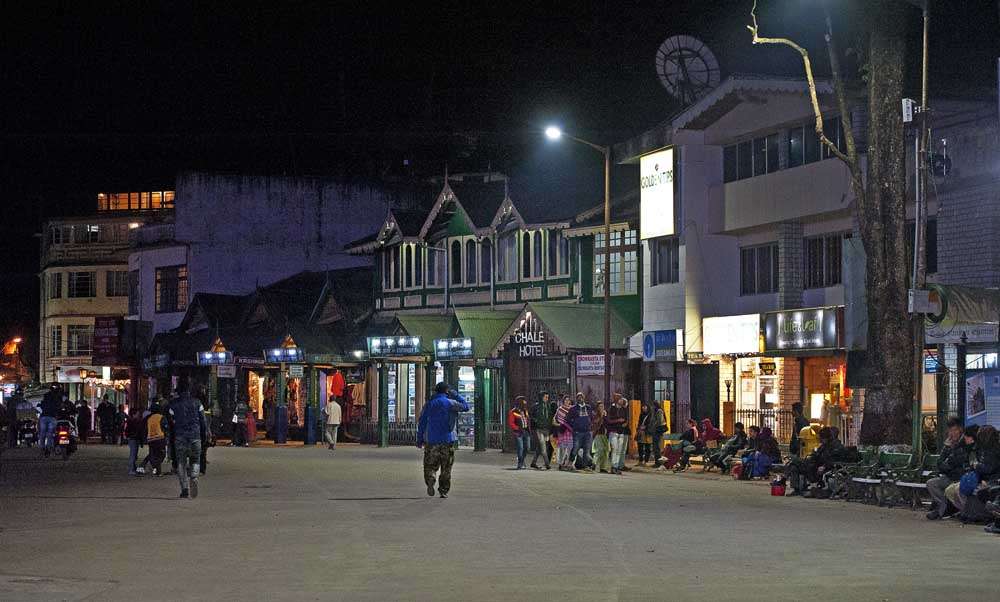
Remnants of colonial architecture on The Mall in Darjeeling town centre
We arrive in Darjeeling and although its blighted by the ubiquitous jumble of reinforced concrete boxes that cling to the hillsides, even these add a certain character to a town that still embraces many of the trappings of British colonial presence – from The Mall that people promenade on in the evenings, the Victorian edifices that are now quality hotels and residences and, of course, the World Heritage ‘Toy Train’.
Darjeeling Himalayan Railway (DHR). The Toy Train
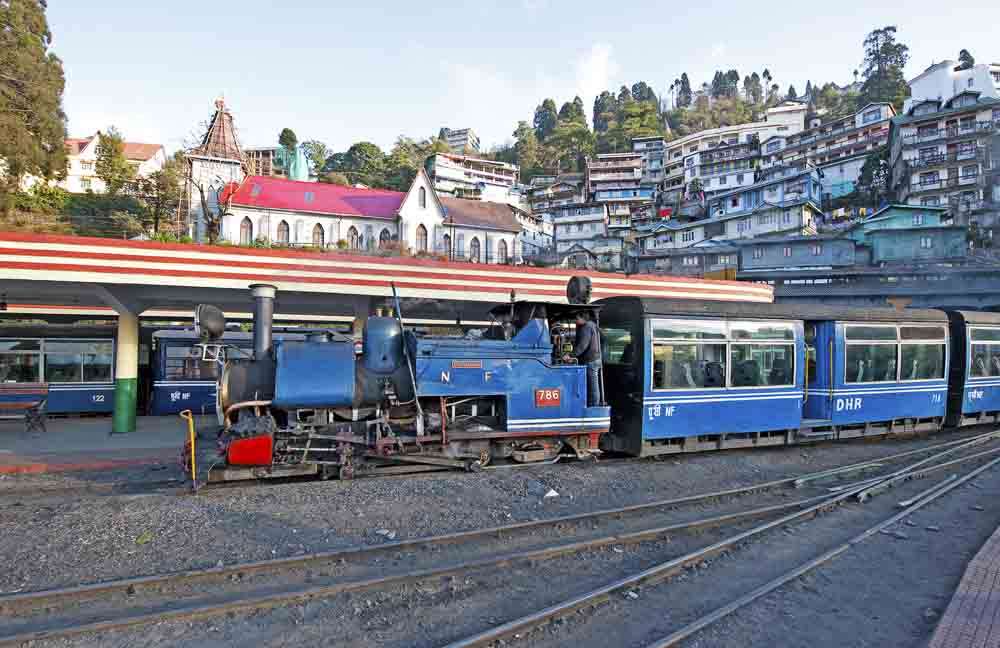
One of a handful of little steam locos that still ply between Darjeeling and Ghum stations
We never cease to marvel at how the British even considered scaling some of the heights they did in their quest for trade or convenience and the Toy Train is such an example of mechanical and engineering bravado.
Whilst the majority of the rail ‘network’ is now powered by little diesel locomotives, a handful of steam locomotives are still regularly used for the stretch between Ghum and Darjeeling Stations – a journey of just over an hour. Its run specifically for tourists (and you’ll pay accordingly at about £15 per head for the short trip) but it’s well worth the fare; as the train winds its way through the streets of the town, so close to the shops that you could help yourself to their wares simply by putting your hand out of the windows.
The opening windows do carry a penalty and if you’re keen on photography expect to be sprinkled liberally in soot and cinders from the belching funnel up front!
One of the engineering marvels is the innovative Batasia Loop, where the railway line describes a spiralling hoop to enable the train to climb over an incline that would otherwise be too steep. It’s also the site of the Gurkha memorial and the train stops briefly to allow you to disembark while it takes a breather and gathers steam for the ascent ahead.
Back on board, we brush off our sooty seats and finish the rest of the trip to Ghum, where there’s a little, well-presented, museum with historic photographs and artefacts.
The train and railway look as though they’re in need of some tlc and general sprucing up but still remain one of India’s landmarks that are a ‘must-do’.
The Himalayan Mountaineering Institute (HMI)
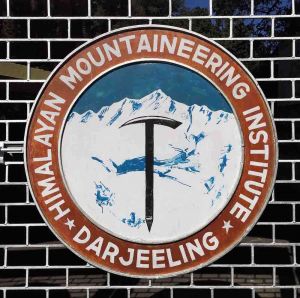
 The HMI was established on the back of Tenzing Norgay and Edmund Hilary’s epic success in making the first ascent of Everest in 1953. Established on November 4, 1954 and encouraged by the then Prime Minister Nehru, it aimed to encourage mountaineering as an organized sport in India. Tenzing was the first Director of Field Training and was in fact cremated in its grounds, where a memorial stands today.
The HMI was established on the back of Tenzing Norgay and Edmund Hilary’s epic success in making the first ascent of Everest in 1953. Established on November 4, 1954 and encouraged by the then Prime Minister Nehru, it aimed to encourage mountaineering as an organized sport in India. Tenzing was the first Director of Field Training and was in fact cremated in its grounds, where a memorial stands today.
A museum charts the progress of mountain climbing, from clothing and equipment that we’d query for a country walk on a winter’s day in England, to the latest technical materials and equipment. The HMI still runs comprehensive mountaineering courses for all levels today.
It’s set within the grounds of the Zoological gardens (with a common entry fee) which although better than many Indian Zoos, nevertheless leaves much to be desired with regards animal welfare.
Makaibari Tea Garden

Makaibari is notable, not only for its award winning tea but also the social and corporate responsibility initiatives its created
There are numerous Tea Gardens around the hills of Darjeeling, many of which will introduce you to a show of the process, followed by a tasting.
We elected to go to the very first commercial Tea Factory in the world, which started in 1859 (not the first tea producer, as the Chinese were a few light years ahead with hand-made teas). Makaibari is a little drive downhill from Darjeeling and not at first glance, as you enter the compound, the most appealing in location or presentation – but this is immediately forgotten when greeted by the lively character who is the owner – Rajah Banerjee.
It’s impossible not to be infused by the enthusiasm, knowledge and commitment of this effusive larger-than-life tea planter, who has a sharper cut glass English accent and inherent upper crust well-meaning arrogance than many of our own landed gentry.
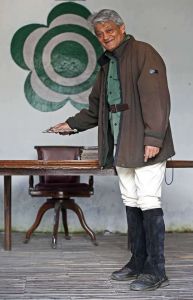 Makaibari estate initiatives in terms of permaculture, sustainable practices, social responsibility and local welfare are legendary and we’ve copied the url of Rajah’s comprehensive website below as it’s well worth the read – and the place even more worth the visit.
Makaibari estate initiatives in terms of permaculture, sustainable practices, social responsibility and local welfare are legendary and we’ve copied the url of Rajah’s comprehensive website below as it’s well worth the read – and the place even more worth the visit.
Banerjee’s workers, with his financial help, have now created ‘home stay’ accommodation and community participation for visitors, to help supplement the income of his workers’ families.
Rajah Banerjee’s ‘Silver Tips’ tea has graced the table of our monarch and not to be outdone we brought some back for ourselves. Rajah, means ‘king’ in Hindi and who are we to dispute this self-styled aristocrat of infusion for the tremendous initiatives he’s embedded in the local area in addition to the award winning brews he produces.
Highly entertaining and you’ll learn something special about sustainable practices as well as tasting a variety of flavours as Rajah stands legs akimbo in his riding jodhpurs, throwing out challenges and questions to those whose attention wanders. Great fun.
For more information on Makaibari Tea Garden
Tiger Hill

A long lens and lengthy patience if you seek a memorable sunrise at Tiger Hill
If you love sunrises then perhaps Tiger Hill is for you but it’ll mean a very early start to get there before hundreds of Indian tourists smother the hillside and destroy the tranquillity of the moment with catcalling and yelling. There are plenty of other hilltops from which to view the sunrise and what’s more you can also see the stunning snow-capped Himalayas from Darjeeling, including spectacular views of Kangchenjunga, the world’s third-highest mountain – which, for us, beats any noisy sunrise to capture the magic of this area.
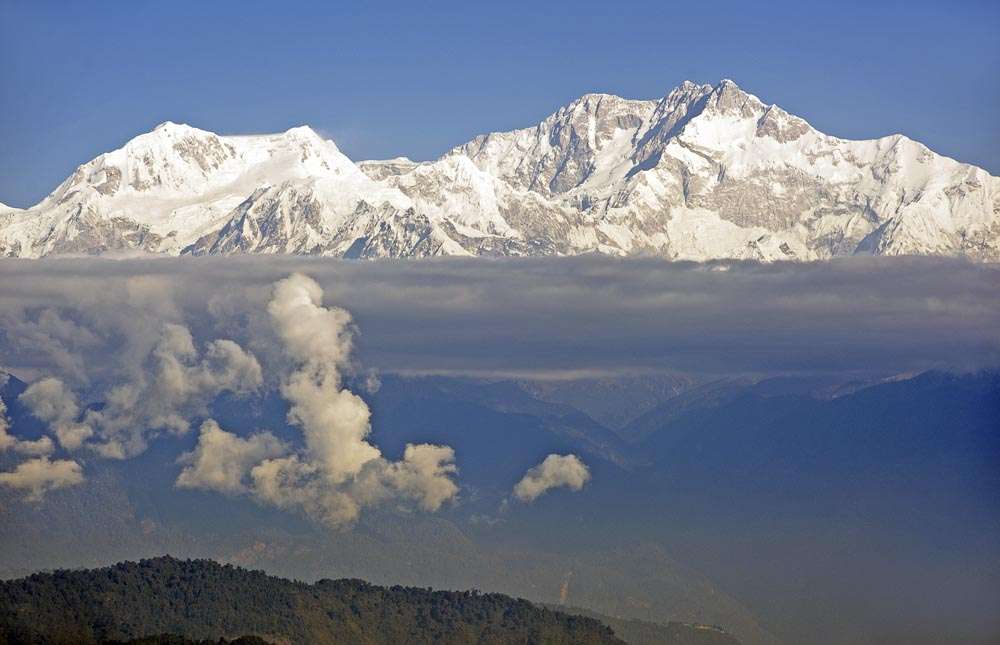
Awe inspiring Himalayas – Kangchenjunga, the world’s third-highest mountain
As with many aspects of India, you can easily be distracted from its charm and beauty by being smothered by the mayhem and madness of its daily life. See through this, ride over it with your own inner calm and you’ll see India for what it once was and continues to be for those who wish to see beyond the chaos.
There is no place like India – and Darjeeling alone seems to blend many aspects of this wonderful country onto one dramatic palette.

 Do you fancy your own holiday in Bengal and northeast India?
Do you fancy your own holiday in Bengal and northeast India?
Why not download our guide brochure or give us a call today on 01202 030443, or simply click ‘enquire’ to let us know what you’d love to do?

































